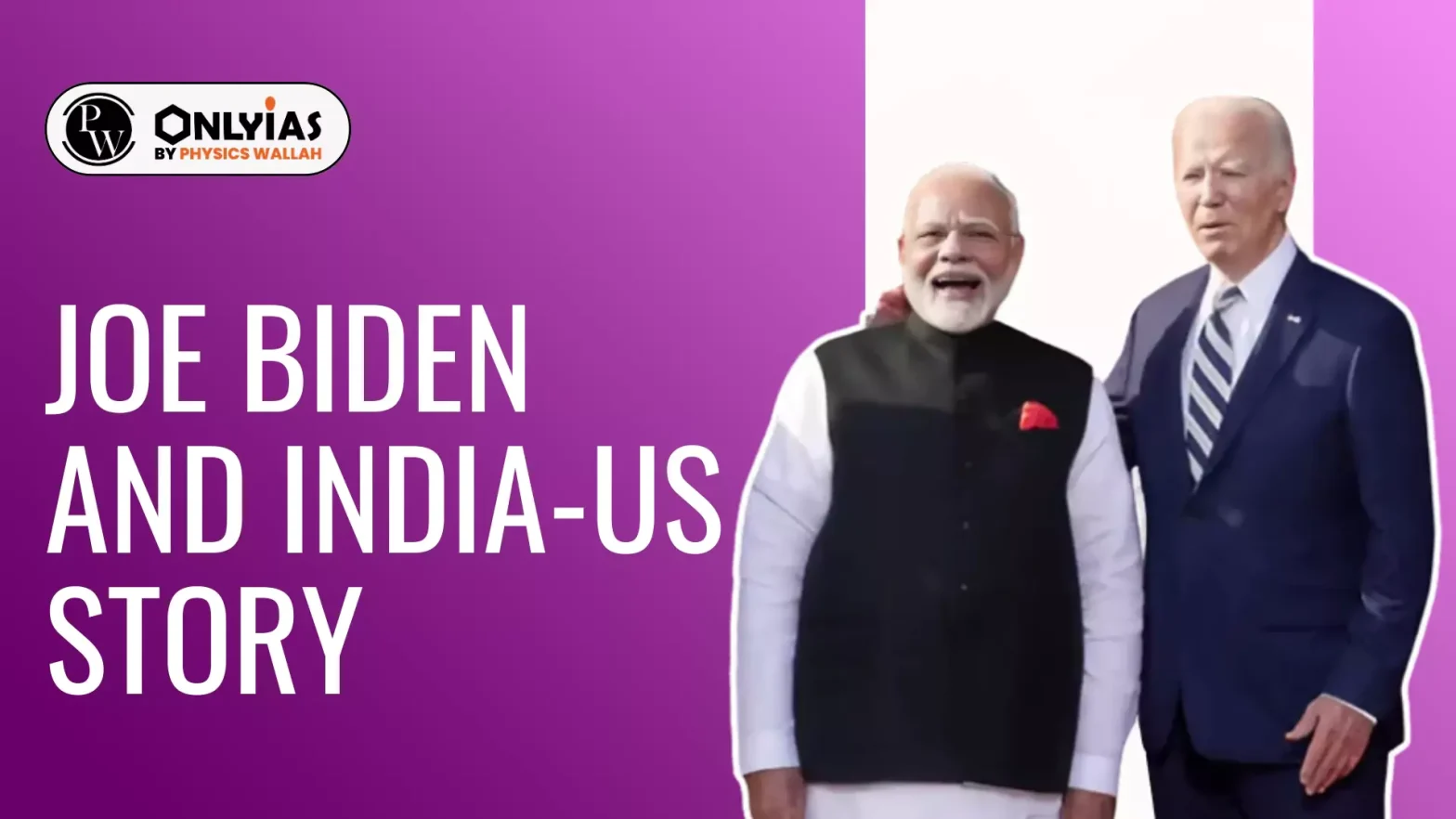India’s Prime Minister is set to visit the U.S. for a significant Quad Summit in Wilmington, Delaware, President Biden’s hometown, giving the event a personal touch. The summit will showcase the progress in the India-U.S. partnership over the past four years, recognizing key achievements. While many strategic discussions have taken place, particularly in high technology, defense, and regional security, the current focus is on turning these ideas into action. The goal is to implement the plans and achieve concrete results, advancing the shared vision of both nations.
Historical Background
US-India Relations Before Biden: When Biden first took office, foreign policy experts were cautiously optimistic about the trajectory of U.S.-India relations. Both the Republican and Democratic parties had historically viewed India as a crucial partner.
- Clinton’s 2000 Visit: U.S.-India relations began to deepen significantly after President Bill Clinton’s historic visit in 2000, marking the start of a positive and consistent engagement.
- Post-Clinton Era: Every U.S. president since Clinton—George W. Bush, Barack Obama, Donald Trump, and now Joe Biden—has sustained and strengthened relations with India.
However, there was initial uncertainty, as many wondered whether Biden would be able to maintain the strong momentum established during the Trump administration. Despite initial scepticism, especially in India, regarding Biden’s ability to build on Trump’s strategic advancements, Biden exceeded expectations, demonstrating even stronger engagement with India on critical issues.
Enroll now for UPSC Online Classes
Trump Administration’s Contributions
- Shift in Strategic Policies: During Trump’s presidency, significant shifts in U.S. foreign policy affected the broader geopolitical landscape:
- Withdrawal from Afghanistan: Trump’s push to withdraw U.S. troops from Afghanistan marked a pivotal moment, aiming to reduce U.S. reliance on Pakistan and end what he viewed as a costly and unsustainable military presence.
- Confrontation with China: Trump escalated economic tensions with China through high tariffs and initiated a trade war. This adversarial stance also highlighted the growing need for strategic alignment in the Indo-Pacific region.
- Indo-Pacific Strategy: Trump’s emphasis on the Indo-Pacific strategy recognized the shared interests between the U.S. and India in maintaining stability across the Indian and Pacific Oceans. It highlighted the importance of bringing together like-minded nations to counterbalance China’s growing influence.
- Revival of the Quad: One of Trump’s major contributions was revitalising the Quad alliance (Australia, India, Japan, U.S.), setting the stage for greater regional cooperation and positioning it as a crucial forum for addressing security challenges in the Indo-Pacific.
Biden’s Approach to Indo-US Relations
Biden inherited a foreign policy landscape shaped by Trump’s confrontational stance on global issues. While the Democratic Party historically favoured multilateralism, Biden faced the challenge of balancing this legacy with the demands of a shifting geopolitical environment.
- Biden’s Surprise Continuity: Contrary to initial expectations, Biden maintained many of Trump’s policies in Asia, especially regarding China, while making key strategic shifts. His focus shifted toward strengthening alliances and multilateral partnerships rather than relying solely on bilateral diplomacy.
- Afghanistan Withdrawal: Biden’s decision to pull U.S. troops out of Afghanistan in 2021 was a big moment in world politics. With the U.S. leaving, Pakistan’s usual importance in American foreign policy decreased, and the U.S. began to focus more on larger strategic issues around the world.
- Focus on China and the Indo-Pacific: Biden continued Trump’s tariffs on China and escalated economic measures, including banning the export of advanced technologies, such as chips. His administration has been assertive in countering China’s influence. U.S. opposition to China’s growing assertiveness further strengthened its ties with India, positioning the latter as a critical partner in the Indo-Pacific.
- Biden also enhanced the Quad (U.S., India, Japan, Australia), elevating it to a summit-level partnership. Additionally, he launched new alliances, such as AUKUS (Australia, UK, U.S.), signalling a reinforced strategic focus on countering China.
- Technological and Economic Initiatives: ICET (Initiative on Critical and Emerging Technologies): It was launched in January 2023, The initiative elevated and expanded strategic technology partnership and defense industrial cooperation between the governments, businesses, and academic institutions of two countries. Key areas of collaboration include semiconductors, jet engines, and national capacity building.
- Supply Chains initiatives: Biden’s strategy of building resilient global supply chains has placed India at the center, particularly as part of the effort to decouple supply chains from China. The U.S. is mobilizing its allies to support India’s growth in emerging technologies.
- India’s Contribution to the U.S. Economy: The U.S.-India relationship is not one-sided. Indian talent, startups, and defense exports are increasingly contributing to the U.S. economy and security. This reciprocal dynamic strengthens the long-term partnership.
- Non-Military Partnerships and Regional Stability
- Quad’s Non-Military Role: Biden aligned with India’s vision of the Quad as a provider of public goods rather than a military alliance. This includes cooperation in areas like disaster response, humanitarian aid, and regional stability.
- Expansion of Regional Cooperation: Biden’s administration has expanded cooperation in areas such as maritime domain awareness, humanitarian assistance, disaster relief, cybersecurity, and health partnerships, all contributing to broader regional stability.
Despite significant challenges, such as India’s neutral stance on the Ukraine war—where it chose not to align with the U.S. position and continued purchasing oil from Russia despite international sanctions—along with policy divergences on Bangladesh and various allegations against India, the overall relationship between India and the U.S. has remained resilient. These issues, while contentious, have not derailed the broader strategic partnership.
Check Out UPSC NCERT Textbooks From PW Store
Conclusion
US-India cooperation is rooted in shared strategic concerns in the Indo-Pacific, such as managing the China challenge, addressing border tensions like the Galwan clashes, and enhancing economic security. Both nations have strengthened their collaboration through new mechanisms, deepening economic and security ties, and fostering closer connections between their private sectors. The strong foundation set by President Biden’s administration ensures that, regardless of future U.S. leadership—whether it’s Harris, Trump, or another figure—the U.S.-India relationship is on a path of continued growth, fostering mutual stability and progress in the Indo-Pacific and beyond.
![]() 19 Sep 2024
19 Sep 2024

